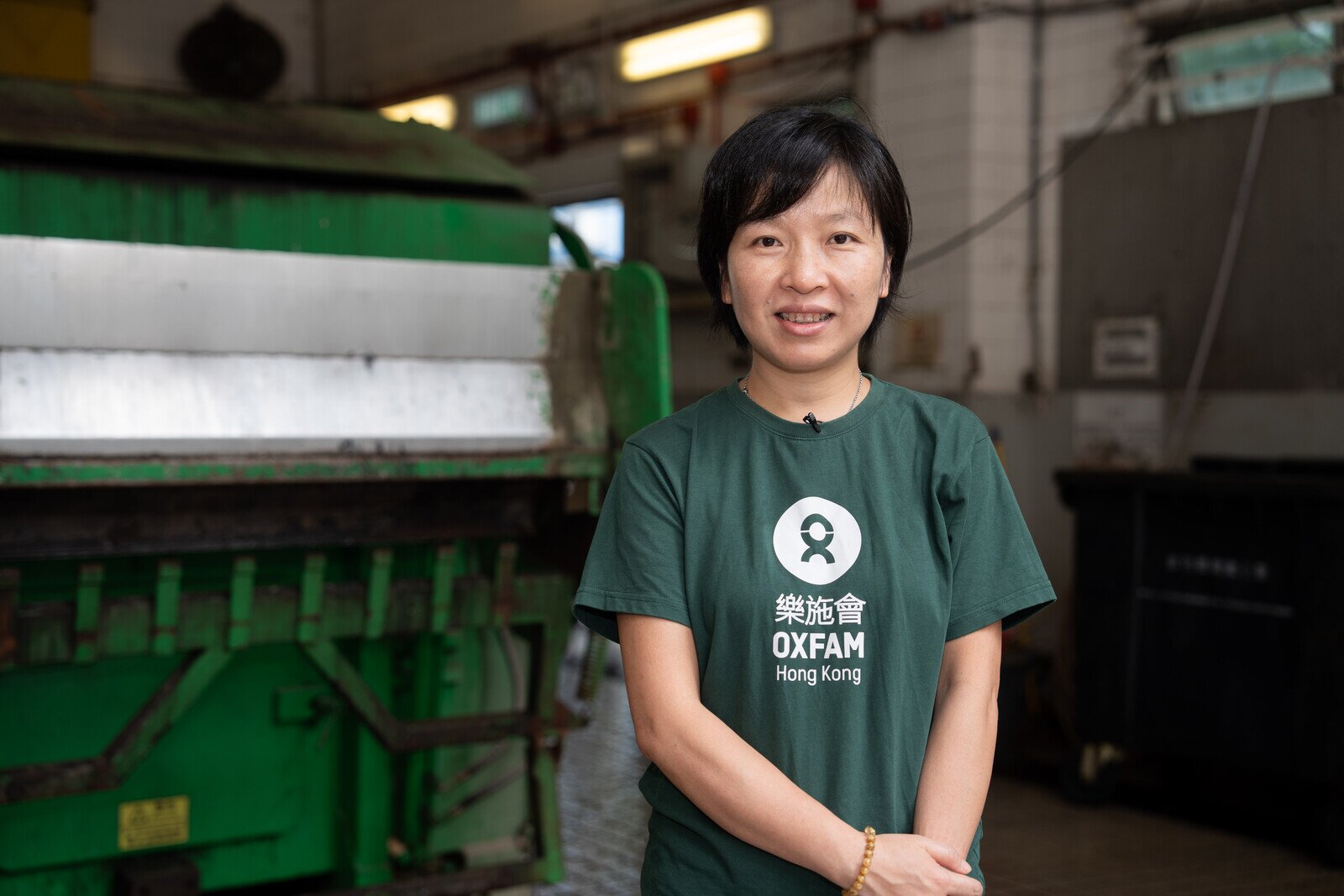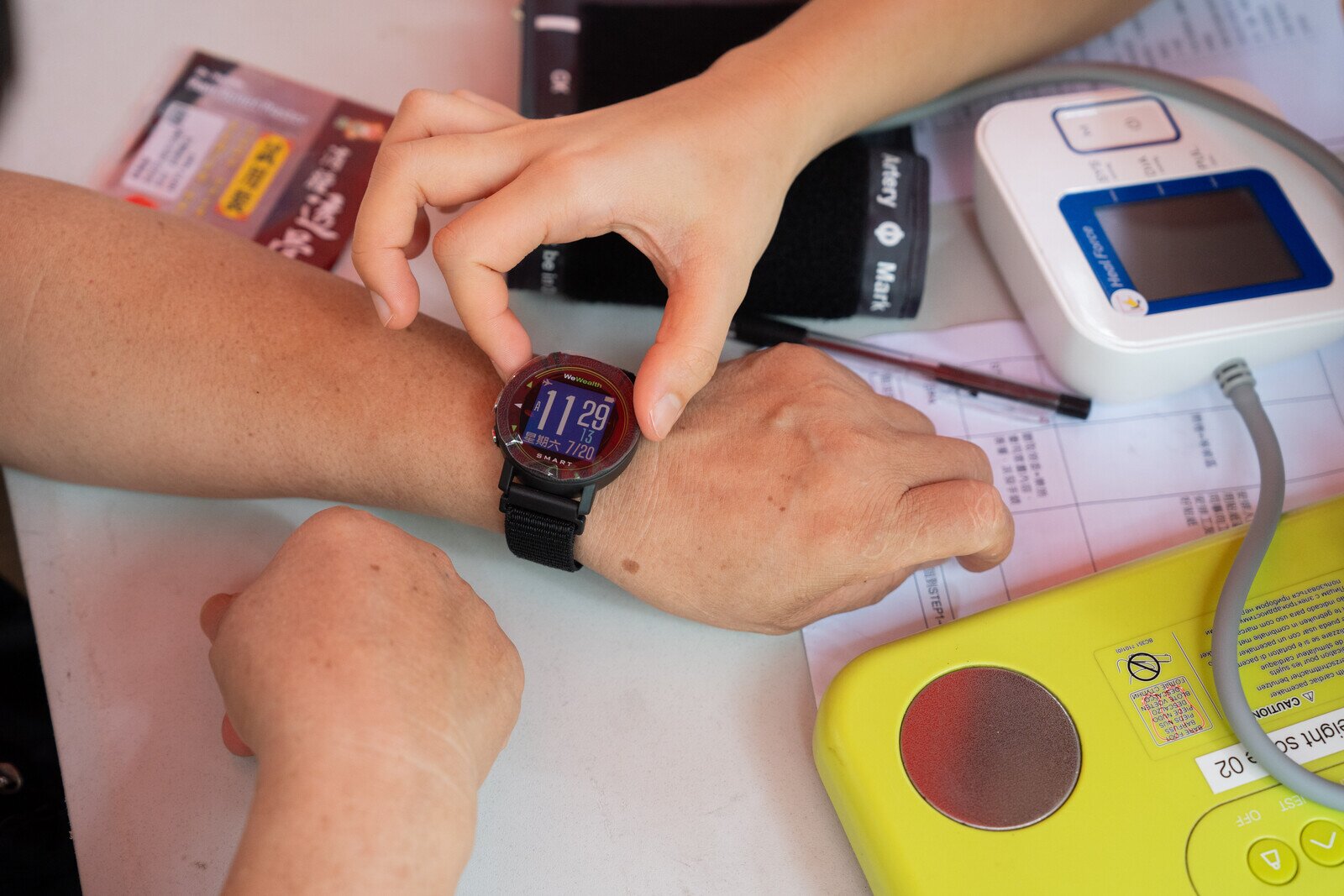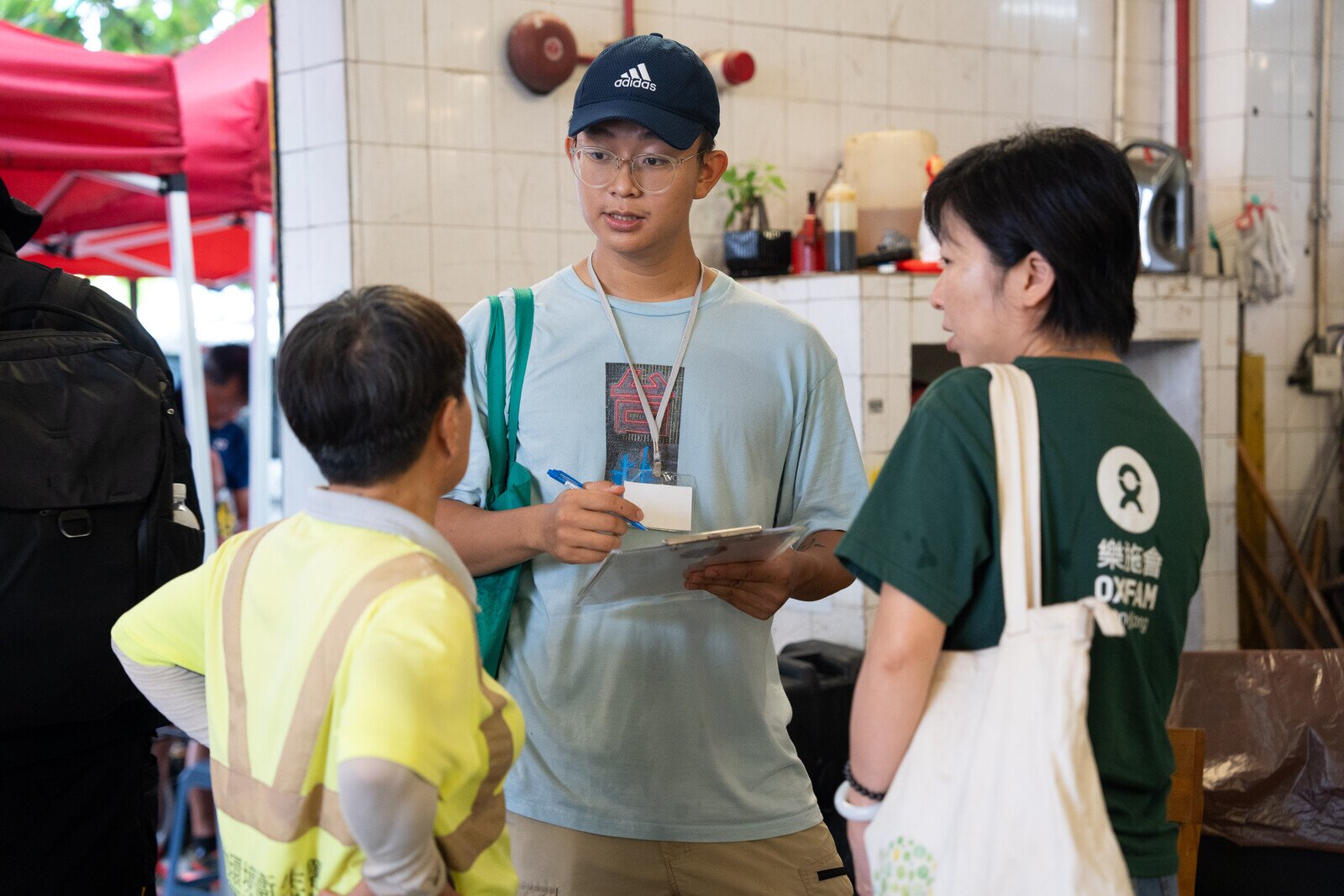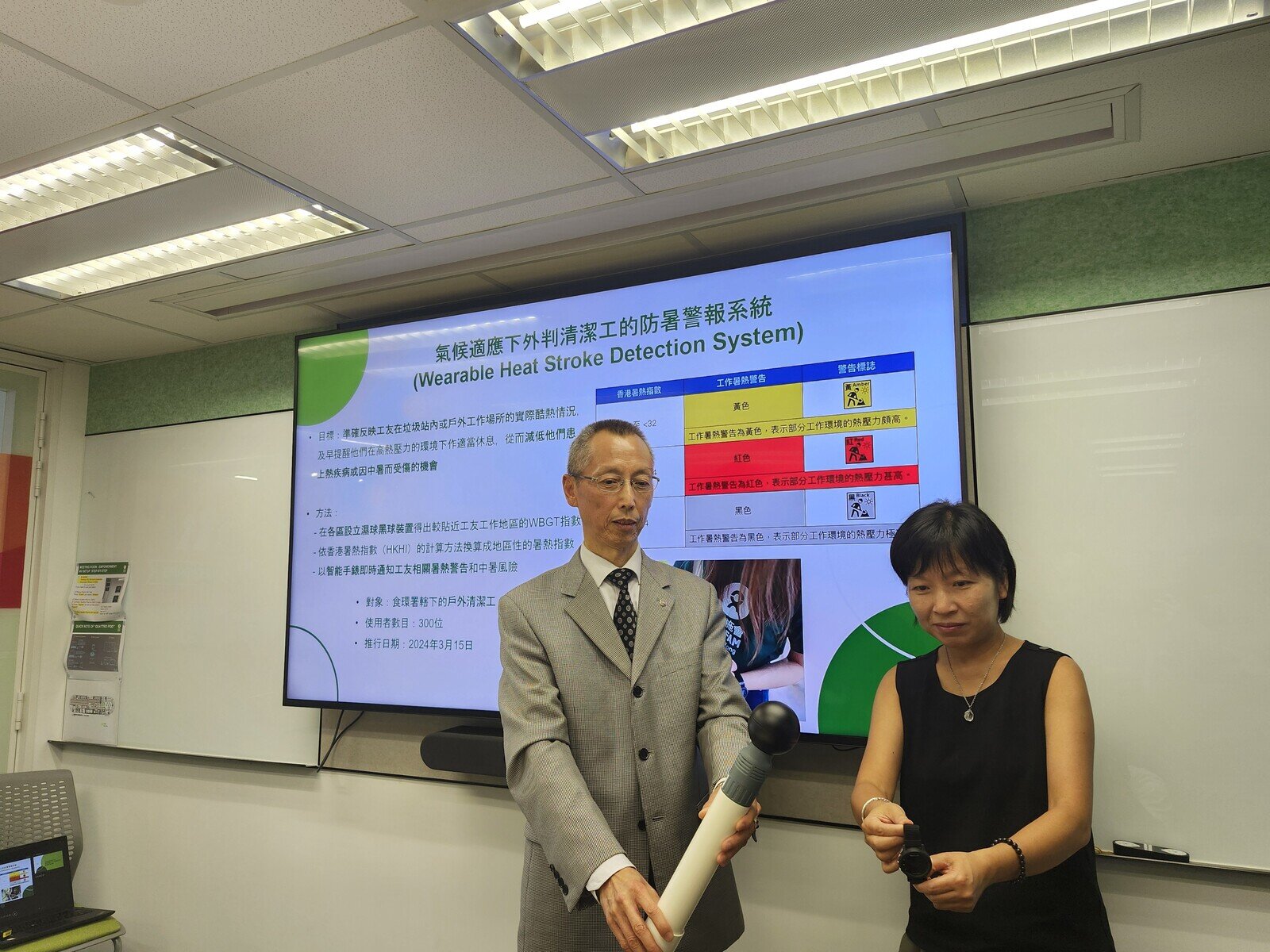02 SEP 2024
Oxfam Introduces Wearable Heat Stroke Detection System to Improve Climate Adaptability for Outdoor Cleaners in Hong Kong
Climate change continues to raise global average temperature. In line with the global trend, Hong Kong recorded its second warmest year last year*. Outdoor cleaners face significant heat stroke risks while working in these extreme temperatures. In response, the government launched the revised “Guidance Notes on Prevention of Heat Stroke at Work” (Guidance Notes) last May and issued the “Heat Stress at Work Warning”. However, these measures have not effectively reduced the risk for outdoor cleaners.
To address this ongoing challenge, Oxfam Hong Kong (OHK) has collaborated with LinkAIQ, a health tech start-up introduced by Cyperport, to develop a wearable heat stroke detection system. The system utilises smart watch to send real-time territory-wide Heat Stress at Work Warnings issued by the Labour Department based on the HKO heat index, as well as Oxfam's local warnings. Outdoor cleaners can receive warning signals directly through the watch, reminding them to take necessary breaks in high-heat environments, thereby reducing the likelihood of heat-related illnesses. In addition, the smart watch monitors vital health parameters such as heart rate and skin temperature, enabling cleaners to keep track of their physical condition and raising awareness about heat stroke prevention.
Oxfam’s 2023 study on the climate adaptation among outdoor cleaners found that 86% to 90% of workers exhibited early signs or symptoms of heat-related illnesses, highlighting their high risk of heat stroke. Regarding the Guidance Note and the issue of Heat Stress at Work Warning, OHK and other local advocacy groups identified several challenges: 1. Local differences of heat stress index are not accounted for, 2. The frequent reissuance of warnings shortly after cancellation causes confusion, and 3. Workers faced difficulties receiving timely notifications. To improve the mechanism, the Labour Department (LD) adjusted the cancellation mechanism of the Heat Stress at Work Warning before the summer of 2024, extending the monitoring duration from 30 minutes to one hour, to minimise the possibility of frequent pop-in and pop-out of the warning. The Labour Department has also linked the warning system with the HKO’s Extremely Hot special weather tips. Despite these revisions, the concerns mentioned above are not fully addressed.
“Oxfam is committed to tackling social issues through innovative solutions. Since government’s measures on heat stress warnings have not effectively reduced the risk of heat-related illnesses among cleaners, we partnered with a health tech company to develop this wearable heat stroke detection system. This system will enhance cleaners’ ability to cope with climate risks,” said Ms Wong Shek Hung, Director of Hong Kong, Macau and Taiwan Programme, OHK.


Our team has set up Wet Bulb Globe Temperature (WBGT) devices across different districts and work environments. These devices measure heat stress indices that are more representative of cleaners’ actual conditions. We will convert the WBGT readings into the Hong Kong Heat Index and corresponding heat stress warning, which will then be immediately communicated to workers through smart watches.
Discrepancies between Local Heat Stress Indices and HKO’s Readings Highlighting the Need for Localised Monitoring
To gather local heat stress data, we set up WBGT devices in the North District, Tsuen Wan and Kwun Tong. These devices were placed in open, well-ventilated outdoor locations to simulate the actual working environments of outdoor cleaners. Results revealed varying degrees of discrepancies between the readings from these devices and the heat index issued by the HKO across the three districts.
For example, during the 28 days of effective testing, there were 16 days where the North district’s heat index triggered more hours of heat stress warning compared to the HKO’s record. It is worth noting that HKO’s heat index reached amber Heat Stress at Work Warning level for the whole testing period. While the North District’s index reached the red Heat Stress at Work Warning level for 16 days and half of them even reached the black Heat Stress at Work Warning level. This indicates that workers in that area were facing significantly higher heat stress than the HKO's territory-wide index suggested. Incorporating local monitoring of heat stress index in the territory-wide monitoring can provide a supplementary reference for the HKO's territory-wide heat index and issuing of heat stress warnings, allowing cleaners to accurately assess the risk of heat-related illnesses in their work environments.
Outdoor Workers Find Smart Watches More Convenient for Heat Alerts and Effectively Reminding Rest and Hydration
In this study, our team distributed smart watches to approximately 300 outdoor cleaning workers. We invited 35 participants aged 29 to 72 for in-depth interviews after the testing period. Most were middle-aged and elderly, some had been diagnosed with chronic conditions like hypertension and diabetes, and three had previously suspected heat stroke and fainting while working.
Nearly all interviewees agreed smart watches were faster and more convenient than phones for receiving heat alerts and weather updates. Many found the local heat stress warning more reflective of their actual work conditions than the territory-wide heat stress warning. They also found the health parameters measured by the watches helpful for monitoring their health status. Overall, most cleaners agreed the heat stress smart watches improved their heat awareness and reminded them to rest and stay hydrated, helping them to prevent heat stroke.
Local Heat Index and Personalised Heat Warning: Improving Workplace Heat Stress Management
This project highlighted significant variations in workplace heat index across different locations. To address this, we recommend that the government establishes a location-based heat index and a personalised heat warning system. We suggest incorporating this system into the guidelines for the long term, providing more accurate early warnings for workers engaged in outdoor work.
Beyond the system, paid sick leave is a crucial element of the overall heat stress management system. The current Employment Ordinance requires employees to have a doctor's certificate and recommended sick leave for at least four consecutive days to receive a "disease allowance" of 4/5 of their daily salary. This discourages many workers from taking leave even when experiencing heat-related discomfort, as they fear losing income.
Finally, we recommend that government authorities actively involve workers in the design process when providing them with heat-resistant equipment, using design thinking to enhance the effectiveness of such equipment.
Annex 1
Heat Stress Index in North Districts or higher.

Heat Stress Index in Tsuen Wan

Heat Stress Index in Kwun Tong

*During the summer months (June to August), the average temperature reached 29.7 degrees, with a record-breaking 54 days of extremely hot weather with temperatures of 33 degrees or higher.
Note: The territory-wide Heat Stress at Work Warning is issued by the Labour Department based on the real-time Hong Kong Heat Index calculated by the Hong Kong Observatory.
- End -
About Oxfam Hong Kong
Oxfam is a global organisation committed to creating a world without poverty through its advocacy, development and humanitarian work.
For media enquiries, please contact:
Natalie Kei
Senior Communications Officer
Phone: (852) 6939 1864
Email: [email protected]










